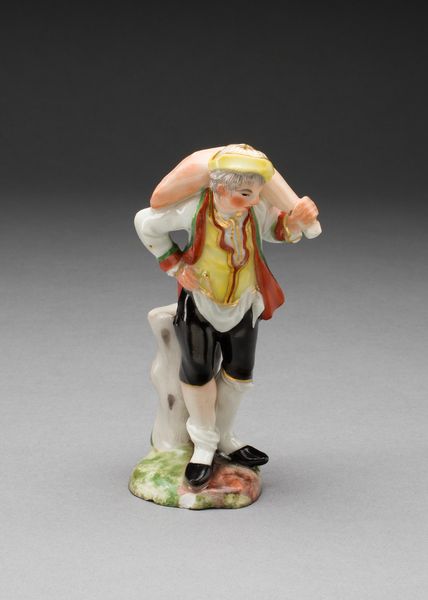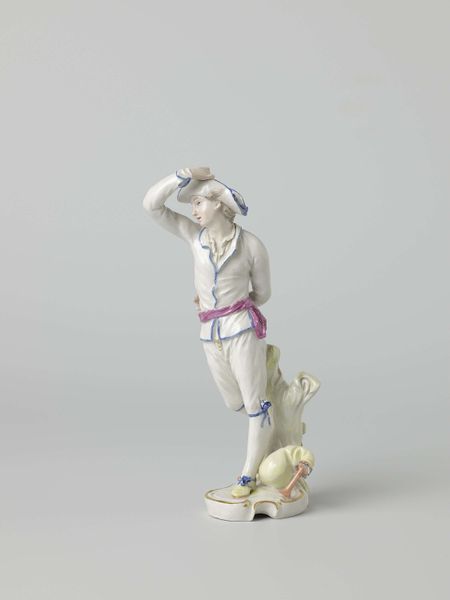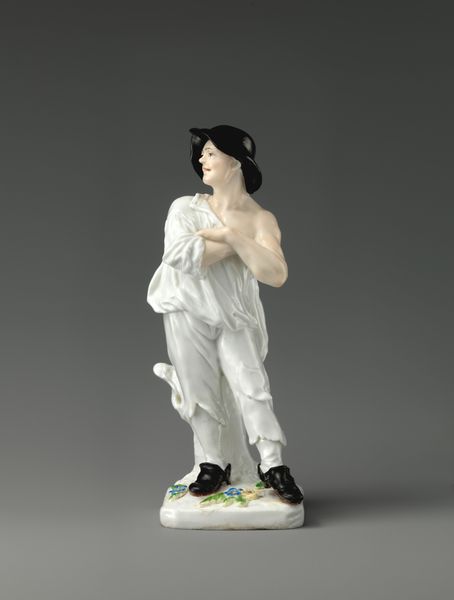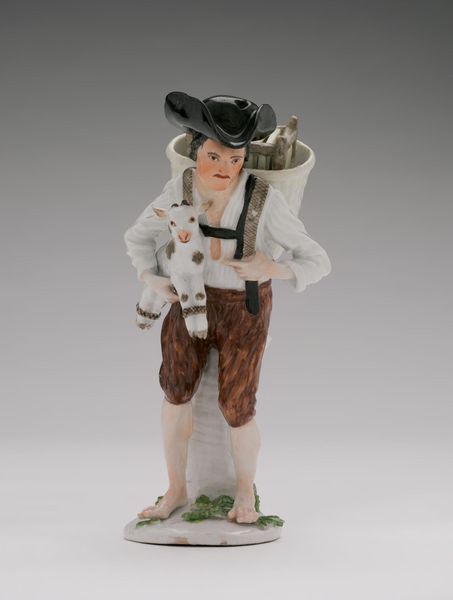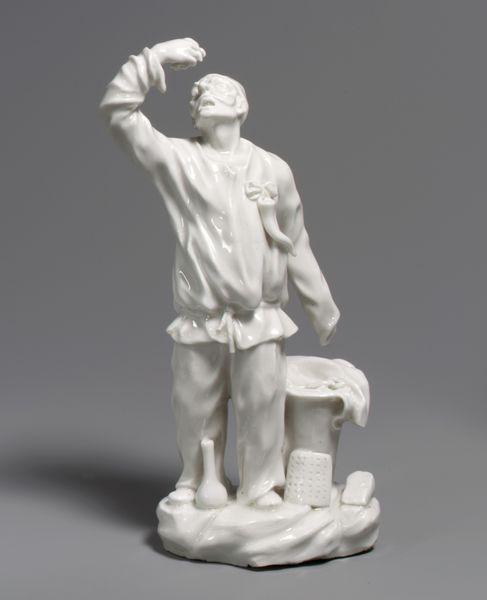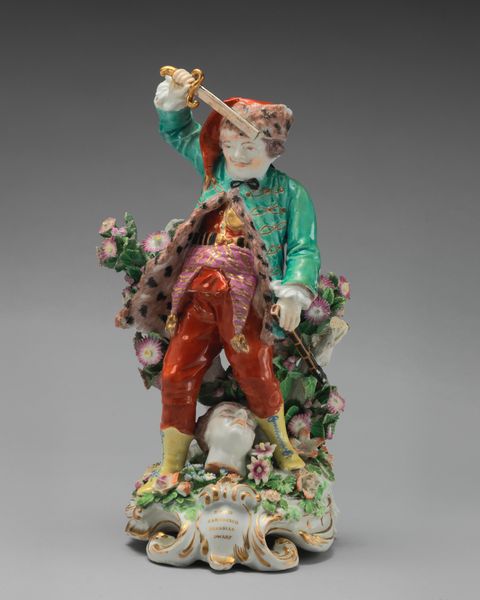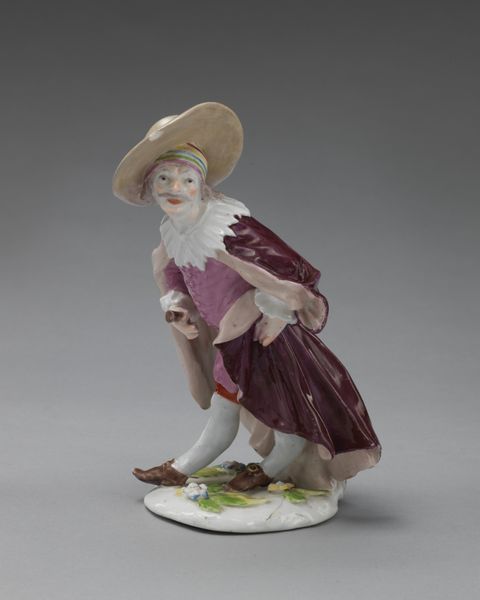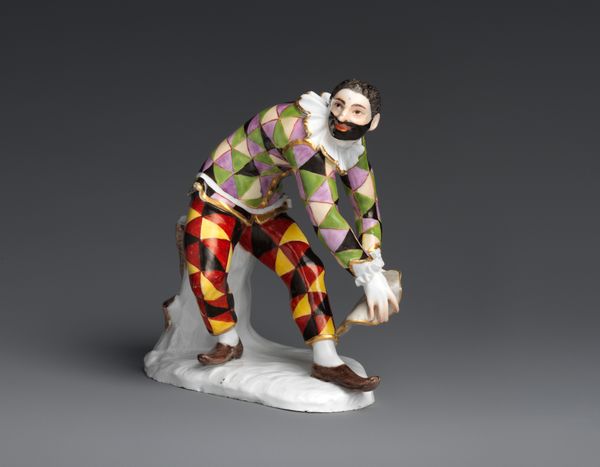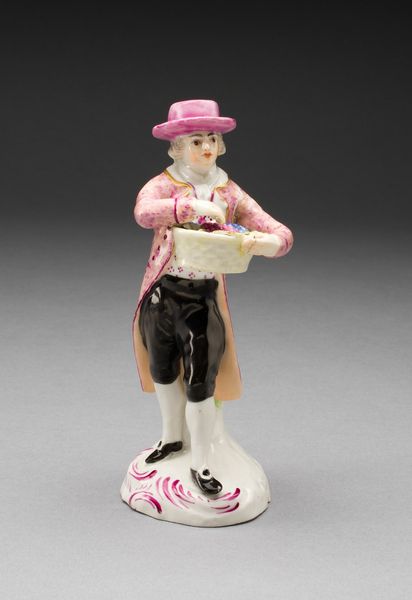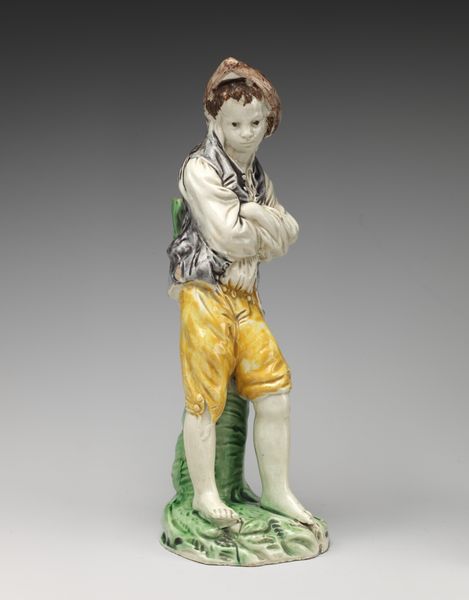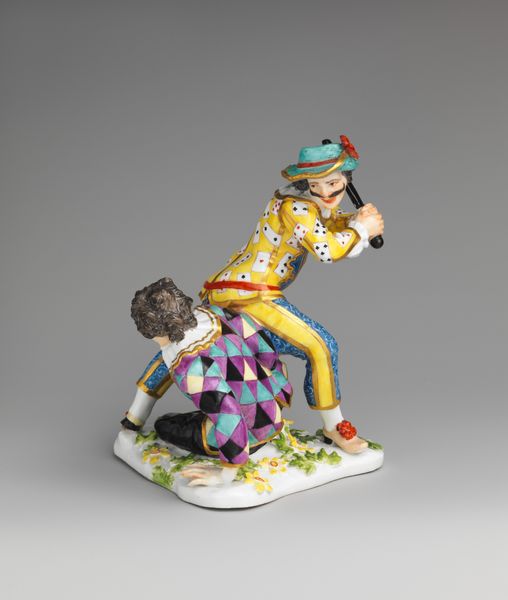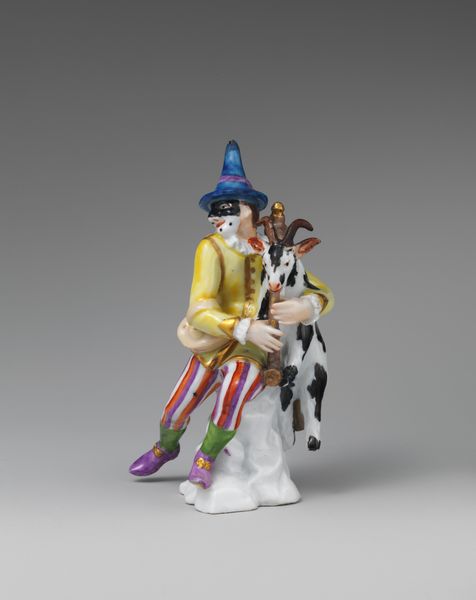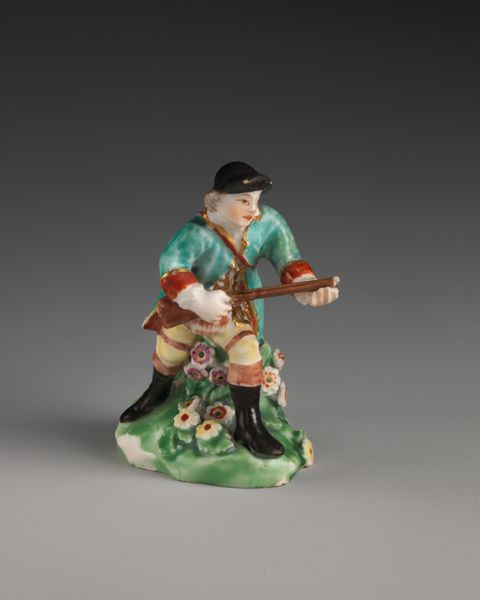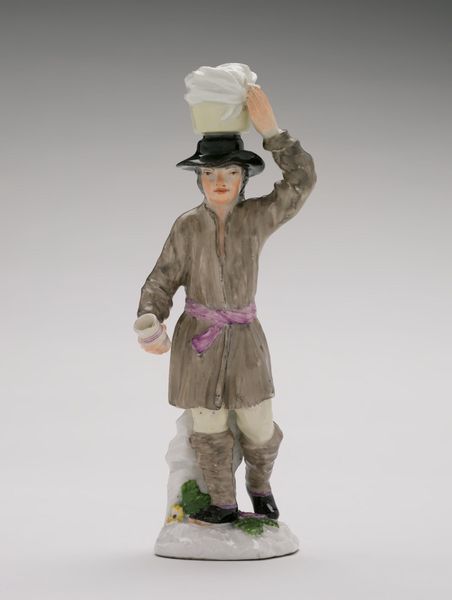
ceramic, porcelain, sculpture
#
baroque
#
ceramic
#
porcelain
#
sculpture
#
men
#
genre-painting
#
decorative-art
Dimensions: 5 1/4 × 2 3/4 in. (13.3 × 7 cm)
Copyright: Public Domain
Curator: We're looking at "Four Seasons (Autumn)," a porcelain sculpture crafted between 1753 and 1755 by the Chelsea Porcelain Manufactory. Editor: It has such a delicate feel to it, doesn't it? The colors are soft, and the figure seems almost dreamlike, caught in a permanent harvest. Curator: These Chelsea figures were quite fashionable among the British elite. Porcelain signaled wealth and refined taste, aligning the owner with continental, aristocratic culture. Figures like this were often displayed in glass cabinets as conversation pieces, embodiments of classical ideals within a domestic sphere. Editor: The grapes, of course, immediately evoke Bacchus, the Roman god of wine, revelry, and fertility. Note how they are positioned in the figure's hands and draped over his shoulder. It is the potent symbol of the season’s bounty but also speaks of transformation and the cyclical nature of life. It invites reflection on mortality and renewal, themes deeply embedded in the symbolism of Autumn. Curator: And the man’s somewhat idealized appearance certainly reflects the Neoclassical revival that was budding then. These weren’t meant to portray laborers realistically but to evoke a gentrified vision of rural life. Editor: Exactly. See how his garments suggest work, yet retain a delicate aristocratic sheen. It blends idyllic imagery of rustic life with a suggestion of idealized, unburdened existence. It’s a curated symbol of ease for those who never truly labored in fields. Curator: That contrast underscores the social function of such art, reinforcing class distinctions through the very act of appreciation. Think of it—these objects presented the elite’s worldview as the epitome of culture. Editor: The enduring symbolism still works on us today. Despite being separated by centuries, these associations persist, imbuing the image with a complex meaning far beyond just simple aesthetics. It reveals a lot about persistent human fascination with natural cycles and cultural ideals of leisurely harvests. Curator: I’d agree. Looking at it, one can also see how potent the image is and how well it played into the historical construction of seasonal beauty and its associated meanings. Editor: Beautifully said.
Comments
No comments
Be the first to comment and join the conversation on the ultimate creative platform.
